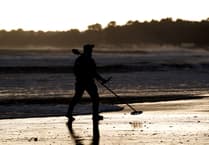Who doesn’t enjoy watching dragonflies and damselflies darting about on a sunny spring or summer day?
Among Surrey’s many beautiful open spaces is a place famed for these fascinating insects: Thursley Common. It’s part of the Thursley NNR (National Nature Reserve) which, at 325 hectares is one of the largest remaining fragments of heathland in Surrey; it is managed by Natural England, with the support of wardens and volunteers from the Friends of Thursley Common.
The NNR as a whole includes extensive areas of open dry heathland, peat bogs and ponds, pine and deciduous woodlands.
Twenty species of dragonflies and damselflies live around the open ponds and ditches at the northern part of the reserve. Thursley NNR is so highly regarded as a place to see dragonflies and damselflies that it was officially launched as a Dragonfly Hotspot in 2019 by the British Dragonfly Society.
.jpeg?width=752&height=500&crop=752:500)
With extensive boardwalks crossing the boggy parts of the reserve, it is easy for all the family to enjoy. I noticed last week that the reserve is popular not only as a place to see dragonflies but also for bird watchers who can see both wetland and heathland species.
The open heathland across most of the NNR is home to a thriving and varied amount of wildlife, much of it rare and confined to heathland. The heathland is criss-crossed by many sandy pathways.
However, it’s at the northern part of the reserve you find the wetland: a series of open ponds and ditches. This is peat bog, formed by sphagnum mosses, which supports wildlife including plants and animals adapted to the wet and nutrient-poor acidic conditions. Whereas ling heather dominates on the heathland, the heather growing on the wetter ground around the mire is the cross-leaved heath. The yellow flowers of the bog asphodel come into bloom during the summer, forming carpets of colour.
The ponds and ditches are home to one of the highlights of the reserve: the dragonflies and damselflies. With more than 20 different species living and breeding here, Thursley NNR is one of the best places in England to watch these aerial acrobats hunt and mate over the open water.
The peat bog is easy to enjoy, with over 1.3 km of boardwalk with viewing platforms, giving access to the otherwise inaccessible wetter parts of the reserve. The boardwalks form part of a Dragonfly Trail, 1.9 km in length and accessible to pushchairs and wheelchairs. The trail is generally flat and mainly on the boardwalk but with some sandy paths.
Carnivorous plants such sundew thrive alongside displays of early marsh orchid in early summer. You can see raft spiders in the ditches and carnivorous plants such as the sundew on the bog, and perhaps common lizards basking in the sun.
Dogs within the reserve must be on a short at all times and aren’t allowed in the water or to roam onto the wider heather areas, particularly from March 31 to August 1, where they will disturb the many ground-feeding birds leading to parent birds abandoning their nests.
Snakes, including adders, are plentiful here and unfortunately dogs in the heather get bitten, which can lead to large vet bills. Snakes present little risk to human visitors provided they are viewed and not disturbed!
For advice on visiting Thursley NNR, head to friendsofthursleycommon.org and select “visit”.
.jpeg?width=752&height=500&crop=752:500)




Comments
This article has no comments yet. Be the first to leave a comment.